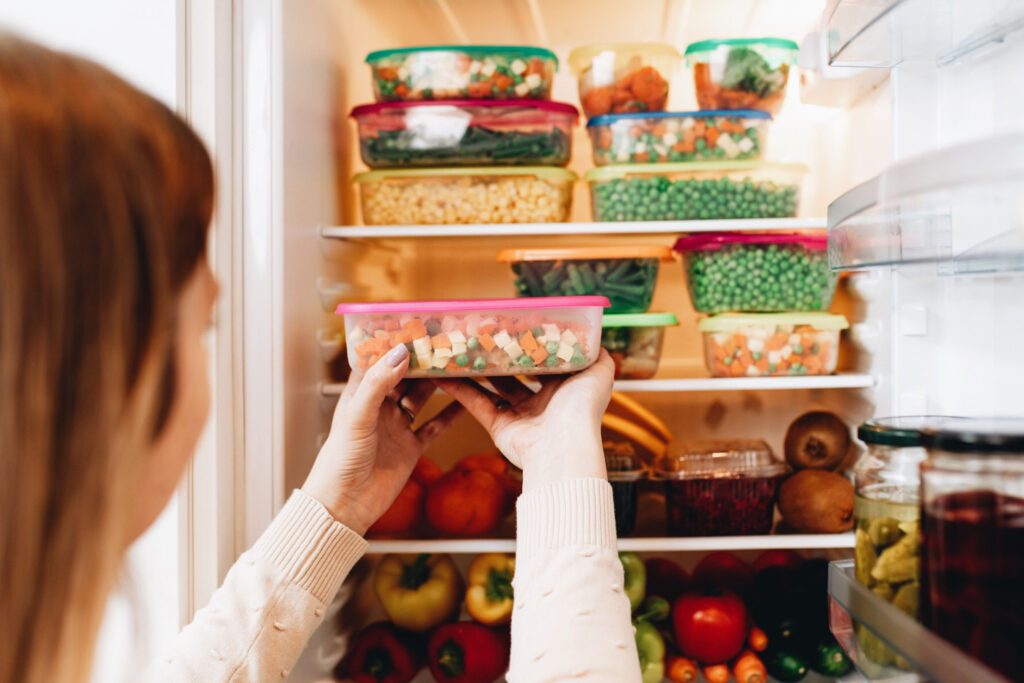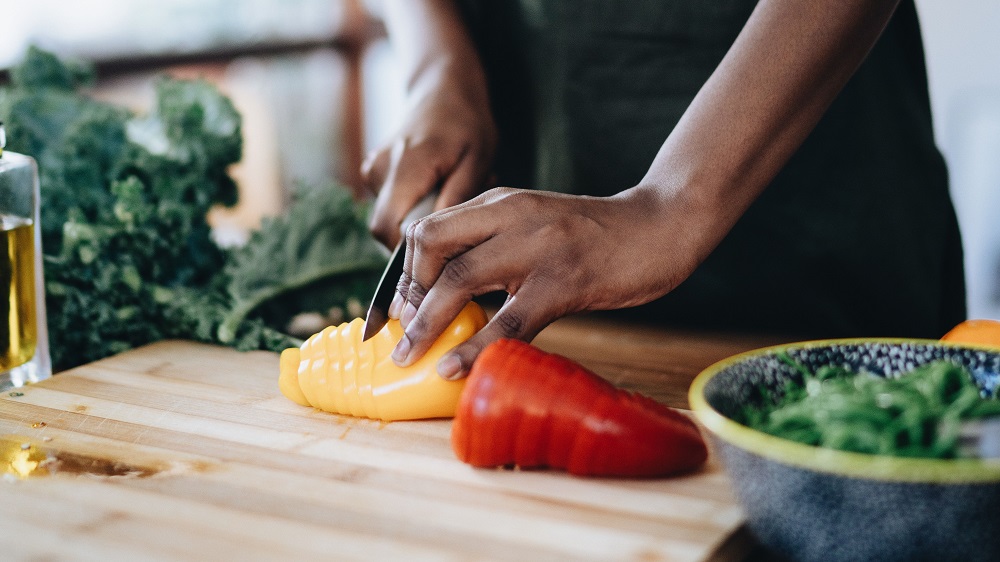Worldwide food waste is predicted to rise by a third before the year 2030.
A report by the Boston Consulting Group (BCG) anticipates that, if left unchecked, 2030 will see a total of 2.1 billion tons of food wasted — in stark contrast to the UN’s goal to cut food waste in half by the same year.
According to the USDA, between 30 and 40 percent of the U.S.’s national food supply is wasted annually. In 2010, this corresponded to approximately 133 billion pounds ($161 billion worth) of food.
In the UK, the Waste & Resources Action Programme (WRAP) estimates annual waste to be around 9.5 million tonnes. Globally, one-third of all produced food — 1.6 billion tons worth around $1.2 trillion — goes to waste every single year.
A recent joint publication by WRAP and the UN Environment Programme UNEP titled the Food Waste Index Report 2021 revealed that in 2019 alone, over 930 million tonnes of food sold ended up in waste bins.
Reducing food waste will help to mitigate climate change, as around 8-10 percent of all greenhouse gas emissions are associated with uneaten food.
This will also improve the efficiency of global food production and could help to feed the millions of people worldwide without enough to eat. But unless governments, producers, distributors, and consumers all take urgent action, food waste will continue to increase.

Why Is Food Waste Important?
Despite one-third of produced food going to waste, people around the world do not have access to adequate healthy food. The impact of excessive food waste is far-reaching, but this contrast with global food insecurity is particularly shocking.
According to The United Nations Food and Agriculture Organization (FAO), approximately 815 million people — 10.7 percent of the global population — experienced chronic undernourishment in 2016.
In the following year, experts estimated that around 821 million people around the world were living with food insecurity. That’s approximately one out of every nine people on the planet.
Every year, around nine million people die of hunger. In March 2020, the U.N. warned that the COVID-19 pandemic could double the number of people starving.
According to data reported by OLIO — a platform that aims to reduce food waste by facilitating the sharing of surplus produce — world hunger could be ended with less than a quarter of the total food wasted in the U.S., UK, and Europe.
Discarding usable food also wastes the land, water, energy, and other resources required for production. Approximately 25 percent of all freshwater is used to grow food that is later discarded. In the U.S. alone, growing food that goes to waste uses up to 19 percent of fertilizer, 18 percent of cropland, and 21 percent of landfill volume.
The food that ends up in landfills is also a significant source of carbon emissions via methane, while the combination of growing and transporting food that will remain uneaten emits the equivalent pollution to 39 million passenger vehicles every year.
Overall, the cost of food waste is both economical and environmental, impacting operational costs and prices within the agriculture sector and placing unnecessary stress on the planet.
The global food system — and the production of animal-derived foods, in particular — is a leading contributor to climate change. But this means that cutting out avoidable food waste could be a significant and relatively actionable way of slowing its impact.
As the food demands of a growing world population increase, the ongoing and predicted effects of climate change will further endanger global food security. So what can we do about it?

How Can We Reduce Food Waste?
The most effective way to reduce food waste is to reduce production to the level of global demand. The food industry currently produces more than enough food to feed everyone on the planet, but too much ends up in landfills rather than with the people who need it most.
Once produced, there are several ways to reduce the waste of excess food. The expectation of uniform, picture-perfect produce is a modern one, and the increasing popularity of imperfect fruit and veg options is helping to counter this.
Supermarkets such as Lidl, Aldi, and Morrisons all offer smaller or unusually shaped produce, while websites including Imperfect Foods and Misfits Market also offer “ugly” fruit and vegetables.
Community-supported agriculture (CSA) programs offer not only local crops, but also unique-looking fruits and vegetables, and many local and regional farmers markets have weekly CSA programs. Platforms and apps like OLIO make a difference, too, enabling effective food sharing before produce becomes unusable.
For manufacturing and processing facilities, improving packaging is a key way to mitigate food waste. Companies such as California’s Apeel Sciences have set their sights on both food waste and unnecessary plastic packaging — another significant contributor to environmental damage.
Apeel produces a thin, natural, water-soluble coating for application to fresh fruit and vegetables. The edible preservative can double and even quadruple the shelf life of certain varieties of produce while also removing the need for plastic wrapping.
“Food preservation technology is important for a number of reasons,” Apeel told LIVEKINDLY in a statement. “At the top of the list, it enables us to fight the global food waste crisis, which in turn helps reduce the impact on climate change, as well as provide more food for those in need.”
“With Apeel, less food is wasted and more resources are saved,” explained the company. “Such as the need for single-use plastic packaging on fresh fruits and vegetables, or the need for refrigeration during transport from grower to retailer in order to maintain freshness.”
Since 2018, Apeel has prevented more than 2 million avocados at grocery stores from going to waste. That has saved enough water to fill 427 Olympic-sized swimming pools. Last year, Walmart planned to replace all of its plastic-wrapped English cucumbers with Apeel, cutting plastic waste equivalent by about 60,000 pounds per year
“Our partnerships with retailers will continue to prevent millions of pieces of produce from ending up in landfills every year,” Apeel said. “Resulting in more farmland preserved, emission reductions of thousands of metric tons in greenhouse gases, and billions of gallons of water saved.”
What Are the 5 Key Steps to Reduce Food Waste?
While commercial, industrial, and governmental change is essential, individual adjustments can also make a significant difference. And in the U.S. and around the world, the vast majority of food waste occurs at home.
According to nonprofit ReFED, 43 percent of all food waste — 27 million tons — is discarded household waste. Approximately two-thirds of food waste at home is due to food spoilage through improper storage, misjudged food needs, and lack of visibility in refrigerators.
Over-preparation, overbuying, and date label confusion also contribute. Poor planning, in general, can lead to misjudged needs, storage, and so on. So how do we effectively reduce food waste in the home?

Effective Meal Planning
Planning meals enables you to use up short-dated ingredients and pick days to eat leftovers in advance. This also means food can be cooked in advance, making nutritious and economical meals more accessible, even on busy days.
Improved Food Storage
Effective storage makes a significant difference in household food waste. Keeping track of use-by and best-before dates and taking action before produce becomes unusable keeps it out of your trash.
Along with refrigeration, freezing, dehydrating, and pickling can effectively extend the shelf life of short-dated foods such as bread, milk, and fresh produce.
Don’t Overestimate
Advance planning is also useful in estimating your food needs for the week. While keeping inventory and writing shopping lists can help you accurately predict your needs for the week.
Ensuring you don’t purchase ingredients twice or unnecessarily also significantly impacts your grocery bill. In the UK, consumers discard up to 25 percent of all avoidable food waste unopened.
For a family of four spending the equivalent of $110 per week, around $25 worth of food could be going to waste. Use-by date confusion and excessive shopping both contribute to this.
Organize Your Kitchen With FIFO
First-in-first-out, or FIFO, can be effectively used alongside advance planning and effective storage. By ensuring you eat short-lived or pre-purchased food before making a trip to the supermarket, you can again reduce both your food waste and your overall grocery bill.
It’s also worth noting that while use-by dates are important, many products remain safe well beyond these recommendations; so use your best judgment.
Throw Out As Little Food As Possible
Ultimately, throwing out as little food as possible is the target. Ensuring leftovers get eaten, cooking meals around what is available — and what is going out of date — will reduce both overall waste and food costs.
If you do need to discard food, keeping it out of landfills will reduce its impact on the environment. Home composting is one such alternative. It reduces overall methane emissions and lowers your individual carbon footprint significantly.


